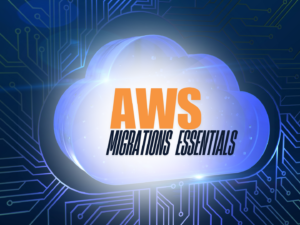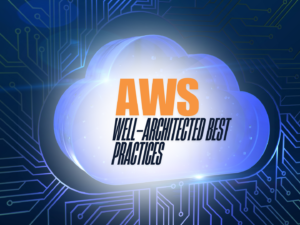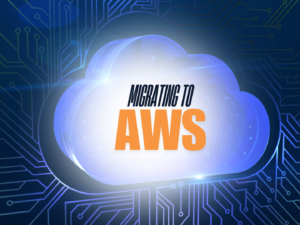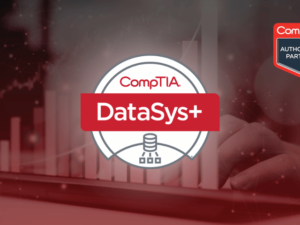Cloud Operations On AWS
- Description
- Reviews
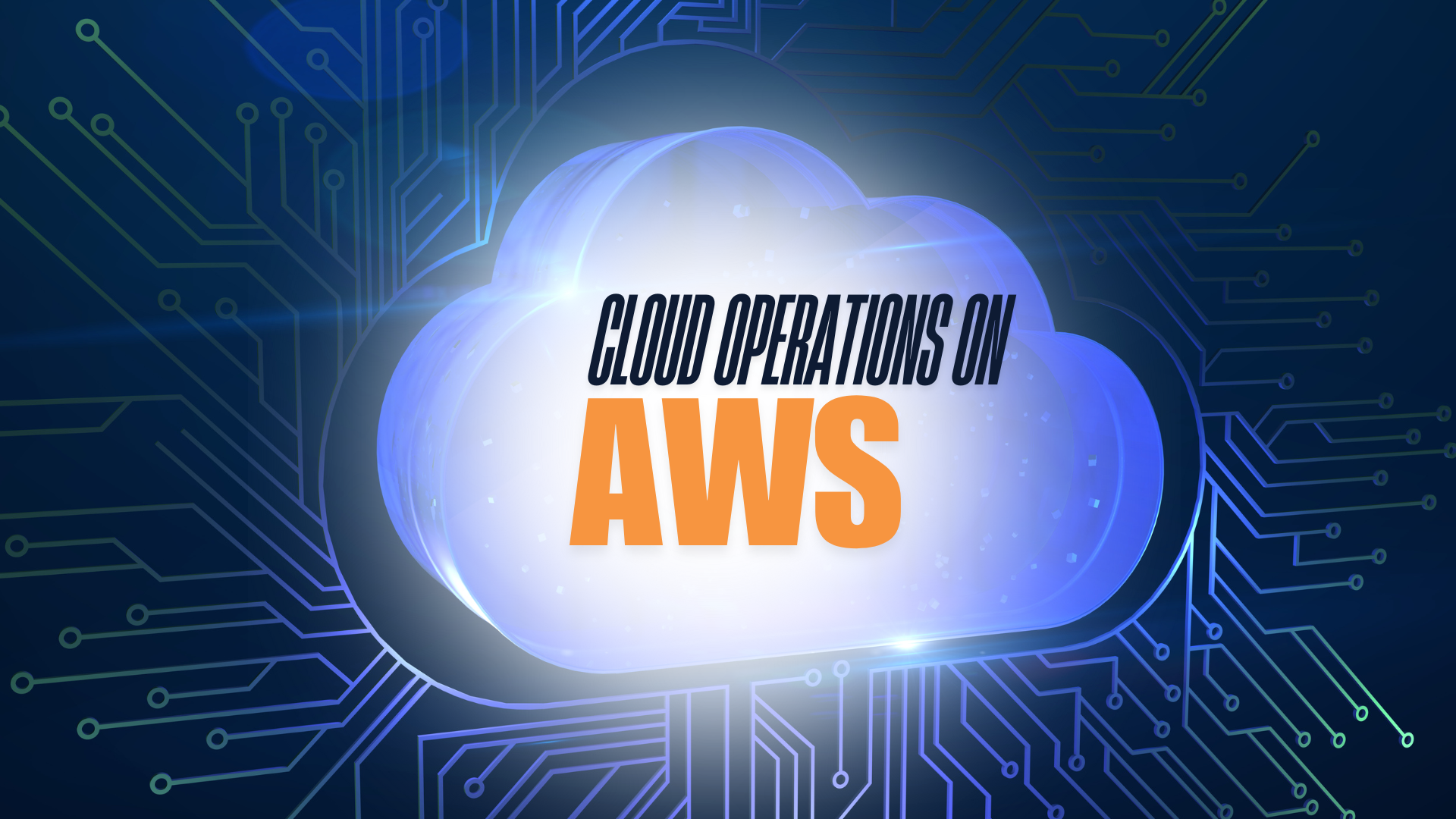
Course Overview
Introduction
This course provides IT professionals with the knowledge and skills to efficiently manage, monitor, and optimize cloud operations using AWS. Participants will learn best practices for ensuring high availability, security, and operational efficiency in cloud environments.
Business Relevance
With AWS as a leading cloud platform, organizations need streamlined operations to enhance security, compliance, and resource optimization. This training enables teams to proactively manage AWS infrastructure, reduce downtime, and improve service reliability.
Target Area
Cloud management, IT operations, security and compliance, enterprise cloud strategy.
What You’ll Learn & Who Should Enroll
Key Topics Covered:
-
AWS Cloud Governance & Compliance: Implementing policies and controls for secure cloud management.
-
Monitoring & Performance Optimization: Using AWS CloudWatch, AWS Config, and other tools for proactive monitoring.
-
Cost Management Strategies: Optimizing cloud spend with AWS Cost Explorer and rightsizing resources.
-
Security & Incident Response: Strengthening cloud security posture and responding to security events.
-
Automated Operations & Infrastructure Management: Utilizing AWS Systems Manager and automation tools for operational efficiency.
Ideal Participants:
This course is designed for:
-
Cloud Operations Engineers & IT Managers: Optimize cloud management and ensure operational excellence.
-
Enterprise IT Teams: Improve cloud service availability and manage resources efficiently.
-
Security & Compliance Officers: Implement governance frameworks and risk mitigation strategies.
-
DevOps & Infrastructure Engineers: Automate and streamline cloud operations.
Business Applications & Next Steps
Key Business Impact:
-
Enhanced Security & Compliance: Strengthen security protocols and ensure regulatory compliance.
-
Improved IT Governance: Establish best practices for managing cloud operations effectively.
-
Operational Efficiency: Reduce downtime and optimize cloud resource utilization.
Next-Level Training:
To further build expertise, consider:
-
AWS Security Best Practices Training: Advanced security frameworks and risk management strategies.
-
AWS Advanced Architecting Training: Designing resilient and scalable AWS architectures.
Why Choose Acumen IT Training?
-
Enterprise-Focused Curriculum: Designed specifically for the challenges and demands of corporate IT environments.
-
Qualified-Led Training: Learn from seasoned industry professionals with extensive real-world experience.
-
Business-Driven Learning: Benefit from practical applications that directly impact your organization’s performance.
-
Flexible Training Options: Choose from Online, Hybrid Training, Instructor-Led On-Site (at your location or ours), and Corporate Group Sessions.
For the full course outline, schedules, and private corporate training inquiries, contact us at Acumen IT Training.
Course Outline
COURSE OBJECTIVES
- Identify the AWS services that support the different phases of Operational Excellence, an AWS Well-Architected Framework pillar
- Manage access to AWS resources using AWS accounts and organizations and AWS Identity and Access Management (IAM)
- Maintain an inventory of in-use AWS resources by using AWS services, such as AWS Systems Manager, AWS CloudTrail, and AWS Config
- Develop a resource deployment strategy using metadata tags, Amazon Machine Images (AMIs), and AWS Control Tower to deploy and maintain an AWS cloud environment
- Automate resource deployment by using AWS services, such as AWS CloudFormation and AWS Service Catalog
- Use AWS services to manage AWS resources through CloudOps lifecycle processes, such as deployments and patches
- Configure a highly available cloud environment that uses AWS services, such as Amazon Route 53 and Elastic Load Balancing, to route traffic for optimal latency and performance
- Configure AWS Auto Scaling and Amazon EC2 Auto Scaling to scale out your cloud environment based on demand
- Use Amazon CloudWatch and associated features, such as alarms, dashboards, and widgets, to monitor your cloud environment
- Manage permissions and track activity in your cloud environment by using AWS services, such as AWS CloudTrail and AWS Config
- Deploy your resources to an Amazon Virtual Private Cloud (Amazon VPC), establish necessary connectivity to your Amazon VPC, and protect your resources from disruptions of service
- State the purpose, benefits, and appropriate use cases for mountable storage in your AWS Cloud environment
- Explain the operational characteristics of object storage in the AWS Cloud, including Amazon Simple Storage Service (Amazon S3) and Amazon S3 Glacier
- Build a comprehensive cost model to help gather, optimize, and predict your cloud costs by using services such as AWS Cost Explorer and the AWS Cost & Usage Report
TRAINING INCLUSIONS
- Introduction to AWS Cloud Operations
- Monitoring, Logging, and Incident Management with AWS services
- Automating cloud operations with AWS Systems Manager
- Implementing security best practices and compliance management
- Hands-on labs for AWS CloudFormation, AWS Config, and AWS CloudTrail
- Troubleshooting and optimizing AWS workloads
- 30 Days Post-Training Support
- Certificate of Training Completion
COURSE OUTLINE
Module 1: Introduction to Cloud Operations on AWS
Module 2: Access Management
Module 3: System Discovery
Module 4: Deploy and Update Resources
Module 5: Automate Resource Deployment
Module 6: Manage Resources
Module 7: Configure Highly Available Systems
Module 8: Automate Scaling
Module 9: Monitor and Maintain System Health
Module 10: Data Security and System Auditing
Module 11: Operate Secure and Resilient Networks
Module 12: Mountable Storage
Module 13: Object Storage
Module 14: Cost Reporting, Alerts, and Optimization
For FULL COURSE OUTLINE, please contact us.
Inquire now for schedules and private class bookings
FAQs
-
What is Cloud Operations on AWS?
This training focuses on managing, monitoring, and automating cloud operations using AWS best practices. -
Who should take this course?
IT administrators, DevOps engineers, cloud architects, and security professionals responsible for AWS cloud operations. -
Do I need prior AWS experience?
Basic knowledge of AWS services is recommended but not mandatory. -
What AWS services will be covered?
-
AWS CloudWatch (monitoring and logging)
-
AWS Systems Manager (automation and operational efficiency)
-
AWS Config & CloudTrail (compliance and governance)
-
AWS Trusted Advisor (cost and performance optimization)
-
-
Will I learn automation in this course?
Yes, the training covers automation techniques using AWS Systems Manager, CloudFormation, and Lambda. -
How long is the training?
The course runs for two days, with hands-on labs and real-world applications. -
Is this course available online?
Yes! We offer both virtual and in-person training. -
Will I receive a certification?
Yes! You will earn a Certificate of Training Completion after successfully finishing the course. -
Does this course prepare me for AWS certification?
While not tied to a specific certification, this training supports AWS Certified SysOps Administrator and AWS Certified DevOps Engineer tracks. -
How can I enroll?
Contact us for training schedules and enrollment details.
Real-World Applications of Cloud Operations on AWS
Case Study 1: Reducing Downtime for a SaaS Platform
Challenge: A SaaS company experienced frequent downtime due to unmonitored infrastructure failures.
Solution: Implemented AWS CloudWatch for real-time monitoring, AWS Auto Scaling for demand-based capacity management, and AWS Systems Manager for automated incident resolution.
Result:
✅ 99.9% uptime, ensuring continuous service availability
✅ Faster issue detection and automated remediation
Case Study 2: Automating Compliance for a Healthcare Provider
Challenge: A healthcare provider needed to comply with HIPAA and data security regulations but lacked a structured compliance monitoring system.
Solution: Deployed AWS Config, AWS CloudTrail, and AWS Security Hub to automate compliance tracking and audit readiness.
Result:
✅ 80% reduction in manual compliance efforts
✅ Improved security posture and regulatory compliance
Use Case 1: Optimizing Cloud Costs for a FinTech Startup
A FinTech company leveraged AWS Trusted Advisor and AWS Compute Optimizer to reduce underutilized resources and right-size their infrastructure.
✅ 25% reduction in cloud spending
✅ Improved performance without increasing costs
Use Case 2: Enhancing Security and Incident Response
A multinational enterprise used AWS Systems Manager Automation and AWS CloudTrail to enforce security policies and streamline incident resolution.
✅ 50% faster incident resolution
✅ Reduced risk of security breaches
Why These Case Studies Matter for You
Efficient cloud operations are critical for minimizing downtime, reducing costs, and ensuring security compliance. By adopting AWS Cloud Operations best practices, organizations can automate workflows, improve reliability, and optimize cloud spending.
🔗 Enroll today
Case Study 1: Reducing Downtime for a SaaS Platform
Challenge: A SaaS company experienced frequent downtime due to unmonitored infrastructure failures.
Solution: Implemented AWS CloudWatch for real-time monitoring, AWS Auto Scaling for demand-based capacity management, and AWS Systems Manager for automated incident resolution.
Result:
✅ 99.9% uptime, ensuring continuous service availability
✅ Faster issue detection and automated remediation
Case Study 2: Automating Compliance for a Healthcare Provider
Challenge: A healthcare provider needed to comply with HIPAA and data security regulations but lacked a structured compliance monitoring system.
Solution: Deployed AWS Config, AWS CloudTrail, and AWS Security Hub to automate compliance tracking and audit readiness.
Result:
✅ 80% reduction in manual compliance efforts
✅ Improved security posture and regulatory compliance
Use Case 1: Optimizing Cloud Costs for a FinTech Startup
A FinTech company leveraged AWS Trusted Advisor and AWS Compute Optimizer to reduce underutilized resources and right-size their infrastructure.
✅ 25% reduction in cloud spending
✅ Improved performance without increasing costs
Use Case 2: Enhancing Security and Incident Response
A multinational enterprise used AWS Systems Manager Automation and AWS CloudTrail to enforce security policies and streamline incident resolution.
✅ 50% faster incident resolution
✅ Reduced risk of security breaches
Why These Case Studies Matter for You
Efficient cloud operations are critical for minimizing downtime, reducing costs, and ensuring security compliance. By adopting AWS Cloud Operations best practices, organizations can automate workflows, improve reliability, and optimize cloud spending.
🔗 Enroll today and take the next step in mastering AWS Cloud Operations!
Testimonials: What Professionals Say About Our Cloud Operations on AWS Training
⭐ ⭐ ⭐ ⭐ ⭐ “Our operations team is now more efficient!”
“We automated key processes, reducing downtime and improving system reliability.”
— Andrew R., IT Administrator, SaaS Industry
⭐ ⭐ ⭐ ⭐ ⭐ “Security and compliance have never been easier!”
“This training provided us with practical tools to automate and monitor compliance.”
— Andrea C., Security Officer, Healthcare Sector
⭐ ⭐ ⭐ ⭐ ⭐ “Highly recommended for cloud professionals!”
“AWS automation and monitoring techniques we learned transformed our cloud operations.”
— Leo D., DevOps Engineer
Request a Quote
Popular Courses
Archive
Working hours
| Monday | 9:00 am - 6.00 pm |
| Tuesday | 9:00 am - 6.00 pm |
| Wednesday | 9:00 am - 6.00 pm |
| Thursday | 9:00 am - 6.00 pm |
| Friday | 9:00 am - 6.00 pm |
| Saturday | Closed |
| Sunday | Closed |

